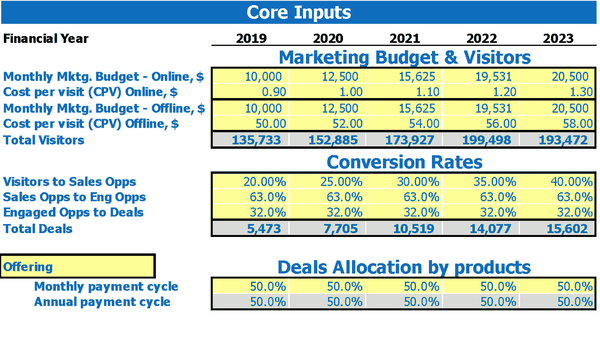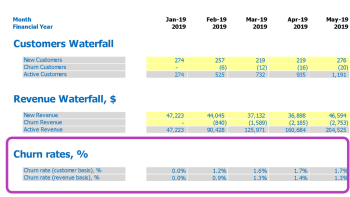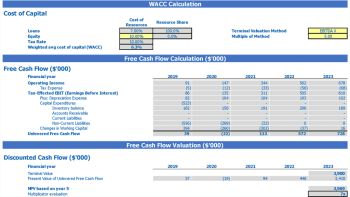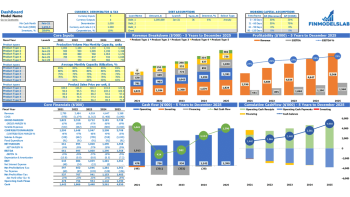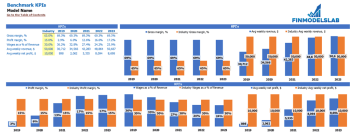Related Blogs
- Take a Loan: Write a Comprehensive Business Plan
- The ultimate guide to growing your cash flow and investment
- How to Create a Zero Budget
- The Benefits of Investing in Startups
- Analyzing Cash Flow Trends: Benefits, Steps, and Tools

It is absolutely impossible to predict the future, but financial modeling can help estimate the future. It is an analytical activity that breaks financial activity down into a series of variables, allowing you to test the impact of variation for each variable. Studying the impact caused by the variation of these variables allows you to better make decisions for the growth of your business.
The financial model is a vital financial tool for every business regardless of size. And with the recent pandemic, it has become of the utmost importance for all businesses to decide exactly where to go, and none other than financial modeling can serve you better.
Is financial modeling a lifeline for businesses? For what? In this article, we will discover the answers to these questions.
What is Financial Modeling?
Financial Model, as its name, defines itself, modeling your finances. It is a process of creating digital models that define your business and then predict how your business will behave in the future. These predictions depend on scenarios, which are called assumptions in financial modeling.
Regardless of the size of the company or business, financial models are often made using Microsoft Excel spreadsheet software. In addition, some companies use other financial software to customize the Financial Model that can meet their requirements. These financial models relate the financial data of the company to the formulas made by variables. Using these variable formulas, the financial model predicts future performance over a certain period.
These variables, called assumptions in financial modeling, help you see what impact your business performance would have under changing circumstances. Except for size, every company and business needs these financial models to anticipate their growth.
Small businesses that don’t have much profit margin must rely on financial modeling to interpret the future appearance of their business. While large companies cannot risk big changes unless they can be sure of a positive impact on their performance, this cannot be done without a well-designed financial model.
What is the use of financial modeling?
Financial models are used by executives and decision makers, and they make vital decisions for business growth and profitability using the results of financial models.
Some of the common uses of the Financial Model are given below:
- Fund raising
- Acquisition of assets
- Organic business growth
- Commercial evaluation
- Analysis of financial measures
- Budgeting
- HR resource management
- Anticipating future growth
Why is financial modeling important for companies?
Financial modeling is essential to assess the future growth of businesses and identify any potential risk that may affect the performance and profitability of the business in the future. There are certain areas where financial modeling becomes of utmost importance to your business.
Financial modeling is a great starting point. If you’re looking for a better way to evaluate investment strategies and compare a company’s future performance, this is for you. Theoretically, the financial model is an abstract mathematical representation of real-world financial situations and future business conditions.
Additionally, entrepreneurs use financial modeling to analyze a company’s revenue growth, cash flow, and expenses. In practice, we display the financial modeling on a Microsoft Excel spreadsheet. It is also used to project the financial performance of a company based on a set of historical data and analytical measures. Generally, it is important to analyze how a company will react to various economic situations before committing funds.
Foresee us deeply to understand the importance of financial modeling for your company or business.
- Increase your business
- Churn reduction
- Business valuation
- Risk minimization
- Product reserve
- Prices
- Production
- Product life cycle
- Exchange rate
- Economic policies
- Change in government regulations
- Cost of raw materials
- Changes in capital expenditure
- Sensitivity analysis
- Scenario analysis
- Monte Carlo simulator
- Benchmark & KPIs
However, the primary role of financial modeling is to develop a picture of how a business will look in the future. It takes from the bottom line to the top line. Once a financial model is ready, different scenarios of the future can be developed for a business. It will help organizations become profitable in an ever-changing business market.
Suppose you are eager to prepare assumptions around the future of your business, or want to learn more about financial modeling. In this case, you can visit FinModelslab , where you can find more than 500 types of financial models.
FinModelslab has designed a variety of financial models to meet the needs of every business. Below are some of the top categories containing dozens of financial templates to meet business requirements.
- Agriculture
- Beauty and sports
- Care and education
- Cleaning, repair and services
- E-commerce
- Entertainment and leisure
- Finance and professional services
- food and drinks
- Health care
- Hospitality
- Manufacturing
- Marketing and consulting agency
- Market
- Real estate
- Retail
- Software as a service
- subscription box
[right_ad_blog]

